IP Portfolio Management in Silicon Valley
ALT IMG TXT: Three people with an iPad, a laptop, and papers with charts and graphs.
In the heart of technological innovation and development, Silicon Valley stands as a testament to how intellectual property (IP) shapes and defines the landscape of modern businesses. Effective IP portfolio management is crucial for startups and established companies alike, ensuring they harness their inventions, creations, and brands to maintain competitive advantages. This article delves into the various facets of IP and its management, specifically within the context of Silicon Valley.
Understanding Intellectual Property (IP)
Intellectual property (IP) refers to the collection of legal rights that result from intellectual activity in the industrial, scientific, literary, and artistic fields. By safeguarding these rights, individuals and organizations can establish ownership over their innovations and creative efforts, which is critical in a competitive market.
Definition and Importance of IP
At its core, IP encompasses creations of the mind, including inventions, designs, brands, and artistic works. The importance of IP cannot be understated; it fosters an environment for innovation by providing creators with the protection needed to invest time, effort, and resources in developing new ideas. Moreover, strong IP rights can drive economic growth, facilitate trade, and increase the market value of companies. In today’s digital age, where information can be easily shared and replicated, the enforcement of IP rights has become even more crucial. Without these protections, creators may be discouraged from pursuing their ideas, fearing that their hard work could be easily copied without compensation.
Types of Intellectual Property
There are several key types of IP that businesses in Silicon Valley utilize to protect their innovations:
- Patents: These protect inventions and new ideas, granting the patent holder exclusive rights to use and commercialize the invention for a specific period.
- Trademarks: Trademarks safeguard brand names, logos, and slogans, distinguishing goods and services in the marketplace.
- Copyrights: Copyrights protect original works of authorship, including literature, music, and film, ensuring creators can control the use of their work.
- Trade Secrets: Trade secrets encompass confidential information that provides a competitive edge, such as formulas, practices, or client lists.
Each type of IP serves a unique purpose and offers different benefits. For instance, while patents may require public disclosure of the invention, which can sometimes lead to competitors learning from it, trademarks can provide ongoing protection as long as they are actively used in commerce. This distinction is vital for businesses to understand as they develop their strategies for protecting their intellectual assets. Additionally, the landscape of IP is constantly evolving, particularly with advancements in technology. The rise of digital platforms and online marketplaces has introduced new challenges and opportunities for IP protection, prompting a need for businesses to stay informed and adapt their approaches accordingly.
The Role of IP in Silicon Valley
The dynamic environment of Silicon Valley reveals much about the strategic use of IP. From tech startups to established giants, effective IP management plays a vital role in shaping company trajectories and market positions.
IP in Tech Startups
For startups, IP can be both a valuable asset and a significant challenge. Early-stage companies often rely on their unique technologies or branding to attract investors and customers. Securing IP rights early on not only safeguards innovations but also enhances credibility in the eyes of potential funding sources.
Moreover, a robust IP strategy can be pivotal during fundraising rounds. Investors frequently evaluate the strength of a startup’s IP portfolio as part of their due diligence. A well-protected IP portfolio may indicate future revenue streams, positioning the startup as a more attractive investment opportunity.
In addition to attracting investors, a strong IP framework can also foster collaboration and partnerships. Startups that demonstrate a commitment to protecting their intellectual property are often viewed as more serious and reliable by potential collaborators, which can lead to valuable joint ventures or licensing agreements. These partnerships can not only provide additional funding but also open doors to new markets and technologies, further enhancing the startup’s growth potential.
IP in Established Tech Companies
For established tech companies, IP serves as a foundation for creating and sustaining market dominance. These companies typically have extensive IP portfolios that span patents, trademarks, and copyrights, enabling them to innovate continuously and protect their market shares from competitors.
Additionally, established companies often engage in strategic litigation to enforce their IP rights. These legal actions can deter competitors from infringing on their patents or trademarks, thereby solidifying their positions in the market.
Furthermore, large tech firms frequently invest in research and development (R&D) to generate new IP, understanding that innovation is key to staying relevant in a rapidly evolving industry. By fostering a culture of creativity and protecting the resulting inventions, these companies not only enhance their offerings but also contribute to the overall technological advancement of the sector. This cycle of innovation and protection creates a competitive landscape where IP is not just a defensive tool but a catalyst for growth and transformation.
Strategies for IP Portfolio Management
Having a clear strategy for managing an IP portfolio is essential for maximizing its value and effectiveness. Companies in Silicon Valley must be proactive and deliberate in their approach to IP management. The fast-paced nature of the tech industry demands that businesses not only innovate but also protect their innovations to maintain a competitive edge.
Identifying Valuable IP Assets
One of the first steps in effective IP portfolio management is identifying valuable IP assets. This involves conducting regular audits to assess the existing IP portfolio, determining which assets are core to the business, and evaluating their potential market value. By engaging in thorough due diligence, companies can uncover hidden gems within their portfolios that may have been overlooked or underutilized.
Startups, in particular, should consider focusing on their unique technologies, brands, and processes. Establishing a clear understanding of which aspects of their business are worth protecting ensures that resources are appropriately allocated toward securing IP rights. Furthermore, startups can benefit from leveraging their IP assets as strategic tools for attracting investors or partners, demonstrating the potential for growth and innovation that their protected technologies can offer.
Protecting and Enforcing IP Rights
Once valuable IP assets have been identified, organizations must take steps to protect these rights. This process includes registering patents, trademarks, and copyrights with the appropriate governmental bodies. Additionally, companies should maintain records of their IP development to assert ownership confidently. A well-documented history of IP creation not only strengthens a company’s legal position but also serves as a valuable resource for future innovation and development efforts.
Enforcement is equally important; companies must be vigilant in monitoring the market for potential infringements. This includes conducting regular Internet searches, employing IP monitoring services, and taking legal action when necessary to uphold their rights. Moreover, fostering a culture of IP awareness within the organization can empower employees to recognize potential infringements and report them promptly. By integrating IP considerations into the company’s overall strategy, businesses can ensure that their innovations are not only protected but also leveraged effectively to drive growth and market presence.
Challenges in IP Portfolio Management
Despite the benefits of robust IP management, businesses often face significant challenges in navigating this complex landscape.
Navigating IP Laws and Regulations
The ever-evolving nature of IP laws can pose challenges for companies in Silicon Valley. Staying informed about changes in legislation, international treaties, and case law is crucial to ensure compliance and protect IP rights effectively.
Organizations may find it beneficial to collaborate with legal experts and IP practitioners who specialize in the latest developments in IP law. This proactive stance can prevent potential legal pitfalls and enhance the overall effectiveness of the IP portfolio. Furthermore, companies should consider investing in continuous education for their teams, ensuring that employees are well-versed in IP policies and practices. Workshops, seminars, and online courses can be instrumental in fostering a culture of IP awareness within the organization, ultimately leading to better decision-making and innovation.
Dealing with IP Infringement
IP infringement presents another significant challenge. Infringements can occur in various forms, from unauthorized use of patented technology to counterfeit trademarks. Companies must be prepared to act swiftly to mitigate the impact of such violations.
Legal strategies may include cease-and-desist letters, negotiations for settlements, or, if necessary, litigation. Establishing a solid procedural response to IP infringement can protect the integrity of the organization’s IP portfolio and maintain market trust. Additionally, businesses should implement monitoring systems to detect potential infringements early. Utilizing technology such as automated alerts and analytics can help organizations track unauthorized use of their IP across digital platforms and marketplaces. By being vigilant and proactive, companies can not only safeguard their assets but also deter potential infringers from exploiting their innovations.
The Future of IP Portfolio Management in Silicon Valley
As the landscape of technology evolves, so too does the realm of IP portfolio management. Companies must remain agile and forward-thinking to ensure their IP strategies evolve in tandem with technological advancements.
Impact of Emerging Technologies on IP
Emerging technologies, such as artificial intelligence, blockchain, and the Internet of Things (IoT), are reshaping how businesses create and manage IP. For instance, AI-driven innovations may challenge existing notions of authorship and ownership, prompting a reevaluation of current IP laws.
Consequently, companies should explore how these technologies can impact their IP strategy and identify new opportunities for patenting innovations or protecting digital assets in a rapidly changing environment. The integration of blockchain technology, for example, offers a decentralized approach to IP management, allowing for transparent tracking of ownership and usage rights, which can significantly reduce disputes and enhance trust among stakeholders.
Evolving Trends in IP Portfolio Management
As companies adopt innovative approaches to IP management, several emerging trends are becoming evident:
- Increased Collaboration: Companies are increasingly partnering with universities, research institutions, and other businesses to codevelop technologies and share IP.
- Focus on Data Protection: With the rise in data-driven technologies, protecting proprietary algorithms and user data is becoming a priority.
- Sustainability in IP Practices: There’s a growing awareness of the environmental impact of IP practices, driving companies to adopt more sustainable approaches.
Moreover, the trend toward open innovation is gaining traction, where organizations leverage external ideas and paths to market alongside their internal capabilities. This shift not only fosters creativity and accelerates development cycles but also necessitates a more nuanced approach to IP management, as companies must navigate shared ownership and licensing agreements carefully. Additionally, as the global market becomes more interconnected, understanding international IP laws and regulations will be crucial for companies looking to expand their reach while safeguarding their innovations.
Conclusion
Effective IP portfolio management is indispensable for organizations operating in Silicon Valley. By understanding the significance of IP, devising strategic management practices, and staying informed about legal challenges, businesses can thrive in this competitive and ever-evolving technological landscape. As the future unfolds, proactive and adaptable strategies will ensure that their IP remains a key asset driving innovation and growth.
Computer Packages Inc. (CPI) is a privately owned IP management company with over fifty years of experience serving the IP community. Our mission is to be the most trusted partner in safeguarding clients’ IP assets with innovative IP management software and annuity services. Learn how we specialize in IP patent, trademark, and annuity management by exploring our services.


